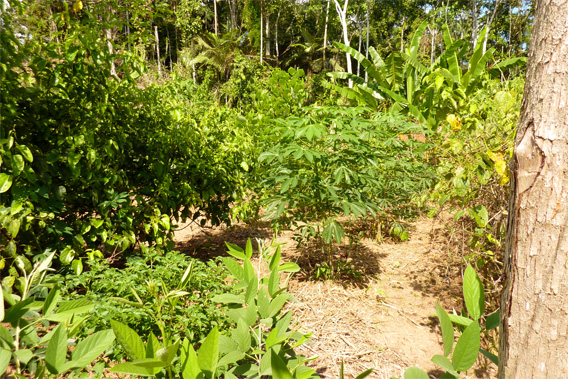read at
New meteorological theory argues that the world's forests are rainmakersSHARE:
print
New meteorological theory argues that the world's forests are rainmakers
Jeremy Hance
mongabay.com
February 01, 2012
The Amazon rainforest meets cleared area for cattle pasture. A radical meteorology theory argues that loss of forest, both in temperate and tropical regions, will lead to less precipitation over land. Photo by: Rhett A. Butler.
The Amazon rainforest meets cleared area for cattle pasture. A radical meteorology theory argues that loss of forest, both in temperate and tropical regions, will lead to less precipitation over land. Photo by: Rhett A. Butler.
New, radical theories in science often take time to be accepted, especially those that directly challenge longstanding ideas, contemporary policy or cultural norms. The fact that the Earth revolves around the sun, and not vice-versa, took centuries to gain widespread scientific and public acceptance. While Darwin's theory of evolution was quickly grasped by biologists, portions of the public today, especially in places like the U.S., still disbelieve. Currently, the near total consensus by climatologists that human activities are warming the Earth continues to be challenged by outsiders. Whether or not the biotic pump theory will one day fall into this grouping remains to be seen.
First published in 2007 by two Russian physicists, Victor Gorshkov and Anastassia Makarieva, the still little-known biotic pump theory postulates that forests are the driving force behind precipitation over land masses. Since the biotic pump turns modern meteorology on its head, it has faced stiff resistance from some meteorologists and journals. Meanwhile, it has received little attention in the public or policy-sphere. Yet if Gorshkov and Makarieva's theory proves correct, it would have massive implications for global policy towards the world's forests, both tropical and temperate.
"The biotic pump is a mechanism in which natural forests create and control ocean-to-land winds, bringing moisture to all terrestrial life," Gorshkov and Makarieva told mongabay.com in a recent interview. According to them it is condensation from forests, and not temperature differences, that drives the winds which bring precipitation over land.
Forest in Big Sur, California. Photo by: Rhett A. Butler.
Forest in Big Sur, California. Photo by: Rhett A. Butler.
"The biotic pump concept gives a consistent physical explanation of how this should be interpreted. Rather than focusing on temperature gradients, which are often a consequence rather than cause of the circulation, one should investigate the conditions when condensation is likely to occur to predict changes in atmospheric circulation," they say, adding that recent work has used the biotic pump to quantitatively explain tornadoes and hurricanes.
But such a radical theory does not gain acceptance or even acknowledgement easily.
"The biotic pump theory calls on the meteorological community to admit a possibility that an important atmospheric circulation driver has been overlooked. As long as one continues to ignore the role of condensation in driving winds, one will continue to ignore the real role of forests in the water cycle and climate," Gorshkov and Makarieva say, adding the current underpinnings of meteorology fail to adequately explain drought and flood events around the world. In addition, the biotic pump theory helps shed light on the rise and fall of past civilizations, such as the Nazca and the Maya.
Gorshkov and Makarieva argue that despite skepticism, the biotic pump theory deserves the full consideration of scientists—quickly.
"Given the deforestation threat, there is no time to lose," they say, further noting that only natural forests, and not monoculture tree plantations, are able to act as biotic pump due because of the ecological changes that occur when forest is converted into plantations.
"The biotic pump theory shows that natural forests are indispensable if we want to have rainfall, and, consequently, agriculture on the land where we live. This scientific message has important economic implications," Gorshkov and Makarieva say. "First of all, people and governments worldwide should realize that economic growth cannot occur at the expense of cutting forests either in one's own country or elsewhere. It is undermining the very pillars of our civilization’s existence. When water and food security are at stake, it is not possible for forest industries to focus on growth, just to increase the global production of wrapping and toilet paper. This should be the main topic of environmental campaigns."
Read more: http://news.mongabay.com/2012/0201-hance_interview_bioticpump.html#ixzz1lgztwUYb

 Tanzania, which once prided in being among the greenest countries on the continent faces major threats of looming desertification brought about by major acts of deforestation. Apparently, despite its reported massive gas reserves, Tanzania still relies heavily on charcoal as a major source of fuel for the majority of the country�s nearly 45 million residents�
Tanzania, which once prided in being among the greenest countries on the continent faces major threats of looming desertification brought about by major acts of deforestation. Apparently, despite its reported massive gas reserves, Tanzania still relies heavily on charcoal as a major source of fuel for the majority of the country�s nearly 45 million residents�










